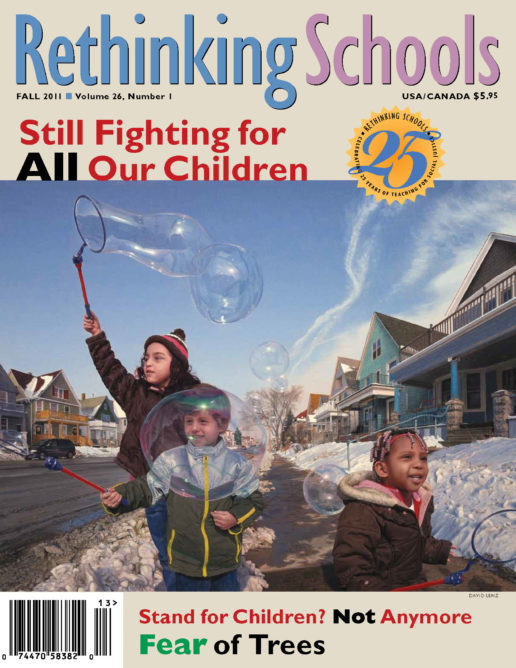Preview of Article:
Patterns and Punctuation – Learning to Question Language
Illustrator: Diana Kraft
Look, Teacher! Moss! I see moss!” Ana exclaims as we cross the street during our 5th-grade class field trip. My eyes follow Ana’s index finger past the grates of a storm drain. “Where?” asks Daniel. “Oh! I see it, too! Moss!”
Moss is not new to my students. It has been a part of their lives in the Pacific Northwest since they were born 11 years ago. We can find moss growing around the perimeter of the rubber seal of car trunks and the base of car windows. We can find moss in sidewalk cracks and curb joints. Moss proliferates in Oregon.
Punctuation is not new to my students’ lives, either. The books they have been reading since kindergarten are full of capital letters, periods, commas, quotation marks, and exclamation points. We can find punctuation on signs, in letters, and on labels. Punctuation proliferates in text, though not always in student writing.
There are more than 20,000 species of moss on Earth. Most of us, however, have only one word to describe moss. So “moss” is what we see. We pass by the green without noticing or thinking about the patterns.
Whether or not we are asked to notice and question patterns in the world around us can depend on who we are. A well-known study by Jean Anyon contrasted the education at a school in which students’ families were working class with a more affluent school. It showed that students in the working-class school were asked to complete mechanical and routine tasks while students in an affluent school were invited to problem-solve, develop, and elaborate on ideas. Many years later, Jonathan Kozol described a similar phenomenon and dubbed it “educational apartheid” in his book The Shame of the Nation.

